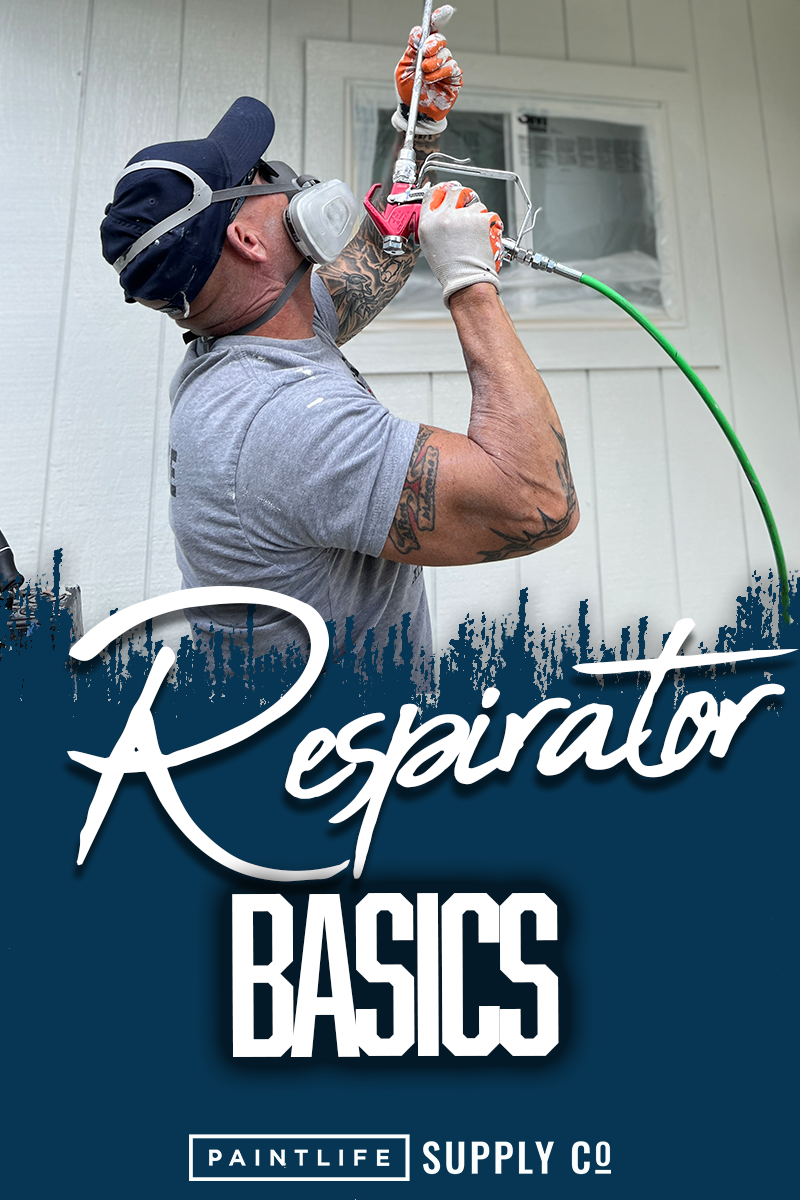
Respirator Basics
Why wear a respirator?
Solvents in paints and prepping solutions may evaporate as organic vapors and can be harmful to your lungs. Particulates painters can be exposed to include dust from sanding, and overspray mists from airless or HVLP spraying and can harmful also. So how do respirator filters help protect you from potentially harmful particulates or organic vapors?
What do painters need to know about the letters and numbers on respirators. Here is a quick run down. Filter ratings use letters and numbers to help determine what type of filtration they can provide. There are three letters (N, R and P), and three numbers (95, 99 and 100). The letters speak to a filter’s ability to help protect against oil-based particulates. N stands for ‘not resistant,’ R for ‘resistant’ and P for ‘proof.’ If you have an N-rated filter, for example, it is not resistant to oil-based particulates, but works well for things like dust, debris and most painting applications. R- and P-rated filters may be used for both oily and non-oily aerosols.
Filter ratings also include a number. A 95-level filter is typically used to filter most types of dust as well as the atomized or aerosolized mist associated with airless or HVLP paint spraying. A 100-class filter is required by OSHA for substance-specific hazards such as lead and asbestos.
The cartridges attached to your respirator can help protect against many types of gases and vapors. Organic vapors typically can be found in products like paints, paint thinner, solvent-based epoxy and urethanes. Cartridges approved for filtering organic vapors have a black label.
When spraying solvent-based paints, you will need both a particulate filter and an organic vapor cartridge. The particle filter is called a pre-filter that attaches to the top of the vapor cartridge and helps filter out the particulates before the air moves into the cartridge. Quality pre-filters are made with non-woven material that have been electrostatically charged to help attract and capture particles. Air passes through the pre-filter and into the chemical cartridge, which is filled with carbon granules should also have been chemically treated to help absorb specific gases from the air. It’s important to use both a filter and a cartridge when spraying paint. It is amazing how many times we see painters on social media spraying paint with an airless sprayer with vapor cartridges and no pre-filter. The pre-filter is an important part of the protection provided by your respirator.
If you are not being exposed to organic vapors, you can use a standalone particulate filter that attaches directly to the face piece. On the other hand, if your exposure only consists of organic vapors when only rolling and brushing paint, an organic vapor cartridge can be used by itself without a pre-filter.
The right filter and cartridge choices are all in vain if the respirator is not assembled correctly, is not the proper size, does not fit correctly, is worn over a facial hair like a beard, etc. Make sure to know your respirator and OSHA guidelines if applicable. Paint Life Supply Co. can supply you with your filter needs.
